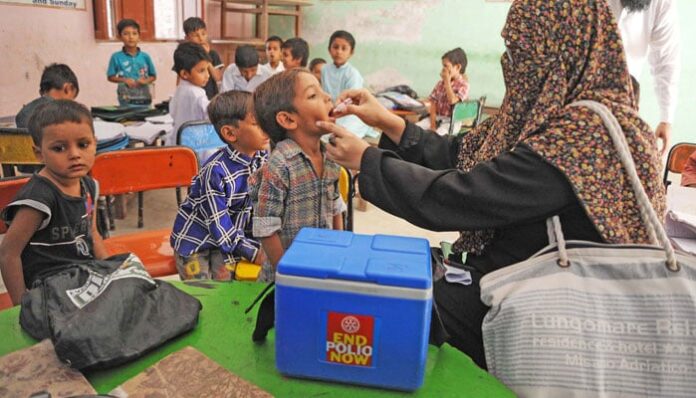Polio paralyzed two more children in Balochistan, raising the yearly tally to 11, highlighting the ongoing struggle against the disease in the region. Officials from the Polio Programme attribute the increasing cases to ongoing protests and security issues, which have disrupted vaccination campaigns across several districts, leaving many children exposed to the crippling disease.
In a related development, the wild poliovirus (WPV1) has been detected in environmental samples from Khuzdar and seven previously affected districts, bringing the total number of impacted districts to 57. According to the Regional Reference Laboratory for Polio at the National Institute of Health (NIH), the latest cases involve a three-year-old from Patri union council in Jhal Magsi and a 1.5-year-old from Maizai union council in Killa Abdullah.
“The virus affecting the child in Jhal Magsi is linked to a strain found in Usta Muhammad in July, 2024 while the genetic sequencing of the virus in Killa Abdullah is ongoing,” a Polio Programme official revealed.
Last year, only six polio cases were reported, but the current year has already seen nearly double that number, with five months remaining. The situation was more controlled in 2021, with only one case reported and the virus confined to a few tribal districts in Khyber Pakhtunkhwa. However, recent setbacks have allowed the virus to spread nationwide.
Dr. Malik Mukhtar Ahmed Bharath, Coordinator to the Prime Minister on National Health Services, lamented the devastating impact of the disease, stating that two more Pakistani children are now paralyzed for life. Ayesha Raza Farooq, the Prime Minister’s Focal Person for Polio Eradication, highlighted that while over 50 districts have reported cases this year, Balochistan faces a particularly severe outbreak, with nine cases across six districts.
Retired Captain Anwarul Haq, Coordinator of the National Emergency Operations Centre for Polio Eradication, confirmed that the Polio Programme has faced significant disruptions in Balochistan due to localized protests and insecurity, which have hindered vaccination efforts and left children at risk.


